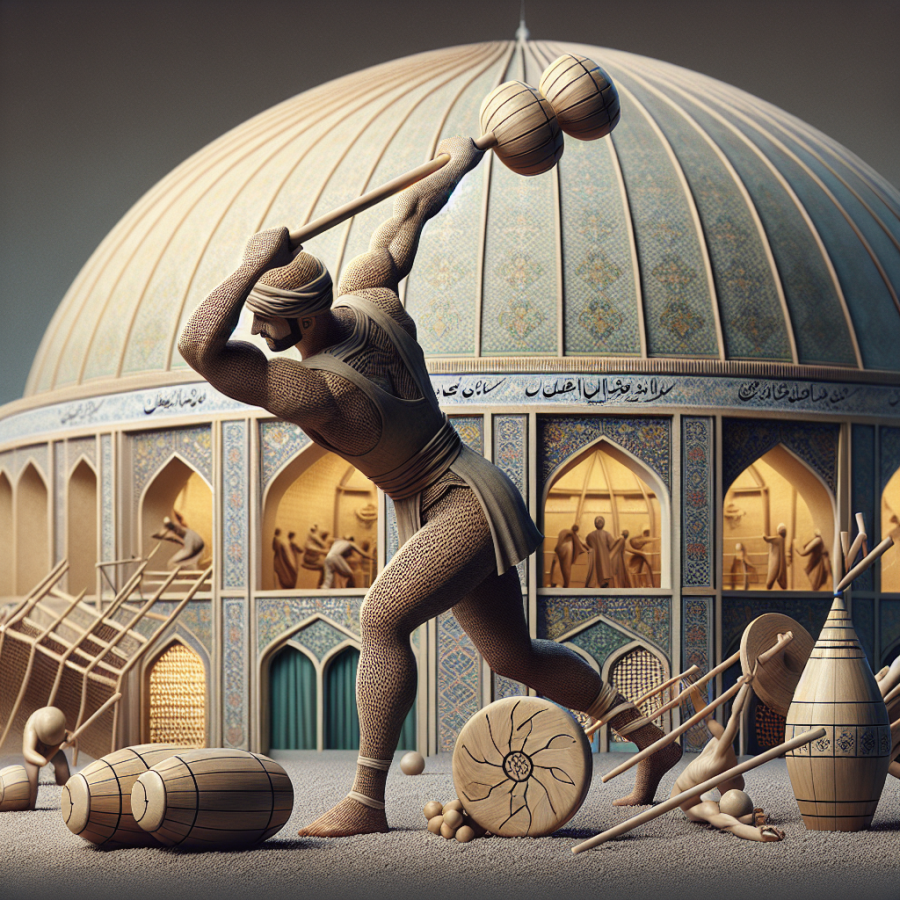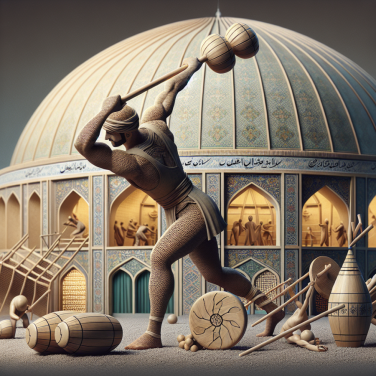Techniques and Rituals: The Practice of Persian Warrior Training
In the realm of Varzesh-e Pahlavani, a storied tradition that dates back centuries to the time of ancient Persia, practitioners weave together physical fitness with spiritual and moral fortitude. The techniques and rituals associated with this noble practice are deeply rooted in the history and culture of Iran, offering a holistic approach to the development of what is considered the ultimate warrior.
The Warrior's Diet and Nutrition: To build strength and vitality, traditional Pahlavani warriors follow a specific diet consisting of natural proteins, complex carbohydrates, and healthy fats. Foods such as nuts, honey, and dried fruit are staples, providing energy for rigorous training sessions. Ancient practitioners were also known to consume a special type of yogurt called 'Kashk,' which is high in probiotics and essential for maintaining gut health and digestion.
Zurkhaneh Training Ground: The Zurkhaneh, or 'House of Strength,' serves as the physical and spiritual training ground for these athletes. It is here that the Varzesh-e Pahlavani practitioners perform a series of exercises designed to improve strength, endurance, flexibility, and coordination. The structure itself holds great symbolic significance, with its octagonal shape representing the eight gates of Paradise, and a sunken workout area reflecting humility before God.
The Morshed's Role: At the center of any Zurkhaneh is the Morshed, a master who not only leads the exercises but also infuses the practice with poetry, philosophy, and sometimes music from a traditional drum called the Zarb. This mentor guides the athletes not just physically but spiritually, imparting wisdom and ensuring the continuity of moral values within the sport.
Traditional Exercises and Equipments: Persian warrior training includes calisthenics and the use of unique equipment. The 'Meel' (Persian clubs) come in various weights and are swung in elaborate patterns to train the upper body. The 'Kabbadeh' (iron bow) is used to develop grip strength and upper body endurance. The 'Sang' (shield) and the 'Takhteh Shena' (push-up board) target the muscles of the chest and arms, reminiscent of the preparation for holding shields and weapons in battle.
Pishkesvat Exercises: One of the key elements of a Pahlavani workout is a set of dynamic movements known as Pishkesvat.
Tracing the Roots: Varzesh-e Pahlavani Through History
Varzesh-e Pahlavani, or Pahlavani exercise, is an ancient form of athletics that embodies a combination of physical training, chivalric behavior, and Sufi philosophy. Dating back to the Parthian Empire (247 BC – 224 AD), it has been more than just a method of combat training; it is a cornerstone of Iranian culture that has transcended centuries, blending martial arts, strength training, and character development.
The evolution of Varzesh-e Pahlavani is closely linked to the Zurkhaneh, the "House of Strength," which is both a physical space and a symbol of this martial tradition. Originating during the Parthian era, Zurkhaneh served as hubs for warriors to prepare for battle, with their activities deeply rooted in mythology and the epic tales of the Shahnameh, the Persian Book of Kings.
Under the Sassanian dynasty (224 – 651 AD), these practices became more formalized, integrating elements from the Mithraic system which included acts of valor and the celebration of strength. During this period, Varzesh-e Pahlavani became synonymous with the training of Pahlavans, or heroes, who were not only esteemed for their physical prowess but also revered for their wisdom and humility.
In the Islamic period following the Arab conquest of Persia, Varzesh-e Pahlavani absorbed aspects of Sufism, emphasizing moral and spiritual dimensions alongside physical training. The warriors, now part of a clandestine movement against foreign domination, ingeniously intertwined their physical drills with spiritual practices to preserve both their martial art and their cultural identity.
The sport underwent a renaissance during the Safavid era (1501 – 1736), as the ruling class, keen on reviving Persian traditions, patronized the Zurkhaneh athletes. It was during this time that Pahlavani became an extraordinary blend of sportsmanship, Sufi spirituality, and Persian nationalism.
Elements such as the Gavzani (wrestling) were paramount in the training of a Pahlavan, blending the martial aspect with the sport's moral code, which dictates respect towards the opponent and the cultivation of virtues such as justice, bravery, and generosity. The sport also puts a significant emphasis on poetry recitation, mental discipline, and music, using instruments like the Zarb or drum, and the Sorna or horn, to synchronize the athletes' movements.




